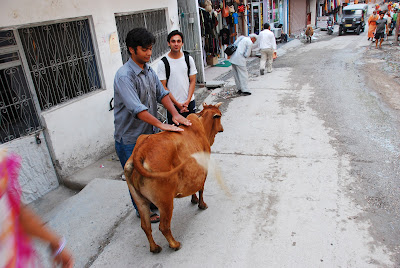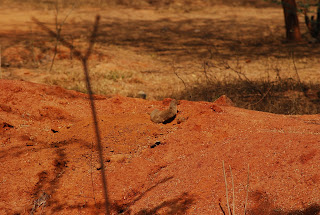Men of influence command reverence from those who believe in them. It is amazing to see the power of leaders, mortal human beings like you and me, save that they possess an 'edge' that sets them apart from the throng.
Such people inspire awe, and varying levels of respect. Depending on the nature of their leadership and the domains they work in, the number of people who follow them differs.
Small or large though it be, what they do bring to our collective lives is change, and depending on whether we love them or hate them, we acknowledge them and react to them as we see fit.
The military commander earns respect for the protection he gives to his people, monarchs and elected politicians for the way they run their territories. Actors, sportsmen and artists command the adoration of people enamoured by their craft.
The time that is today shall pass before long, the people of today will be gone a century from now. Names endure, though. It is the fate of most of us to be forgotten, for there were and are billions of us, with many, many more who are yet to come, and make their mark.
Even the great ones do not forever endure. The league of those who rose above the throng is a sizeable number of people in itself, and only those who made the greatest impact on the world around them see their names last the test of time.
So many others are destined to have their legacy be only as permanent as footprints in the sand.
In the early thirteenth century, the Mongol hordes, unified by Genghis Khan, spilled out of their steppe homelands and made their first attacks on what is today China.
With the importance they gave to cavalry and their legendary accuracy as archers, they became a massive tide that killed, pillaged and conquered vast swathes of land, at such speed and with such efficiency that was hard to believe.
What gave the Mongols their edge against the massive, fortified cities they attacked was a very basic difference of opinion.
The rulers they faced were no less ruthless, determined or cruel. They valued their cities, though, as comfortable places to live, as centres of trade, as symbols of glory and power.
The Mongols, on the other hand, were steppe nomads, living in camps of felt tents, contending daily with harsh weather and the works. Used to the open air, they didn't find cities of much value. They found them too constricting and their residents too soft. So they felt it was better for cities to be burned to the ground.
Their first experience with cities baffled the Mongols, formidable in an open field, but inexperienced at sieges. Once they learned, however, they overran a very large chunk of the known world at the time.
Genghis Khan's greatest generals were termed by him as his 'dogs of war'. A man who valued merit in his armies, Genghis would raise all men who proved their worth to high ranks. His two most famous generals were Tsubodai and Jebe.
Tsubodai belonged to the Uriankhai clan, and is believed to have been a blacksmith's son, who rose to become the greatest of the Mongol generals owing to his legendary prowess in battle.
Jebe, 'the Arrow', was a former adversary of the Khan, so named because he had wounded Genghis in a battle, and had won the latter's respect for his courage and ability at arms.
Between the two of them, Jebe and Tsubodai were the greatest contributors to the victories of the great Khan, and were instrumental in the continuing expansion of the Mongol empire in the years after Genghis' death.
The medieval Chinese drawing of Tsubodai is incapable of inspiring the terror of the man, but few, if any, would dispute the impact he had on history. With a mind that despised politics and was devoted solely to winning the Khan's wars, he blazed through China, Khwarezm (a large part of what is today Iran and Iraq, among other centres of Muslim power in Asia), and eastern Europe, all his life desiring his dominion over all the different armies he faced and the lands he saw.
At its greatest extent, the Mongol empire stretched from China's Pacific coast to the gates of Austria in the east, and a southern limit as far as the Indus. Pursuing relentlessly a desire to see the great sea at the western edge of the known world (having killed and pillaged his way through to the East), Tsubodai led the sons, and later the grandsons of the Khan on the Great Trek into the West.
A master of battle, Tsubodai destroyed the Russian cavalry in his first encounters with them. Wherever he fought knights, his encircling method of combat negated the power of the heavy armoured cavalry, trained best for a frontal attack and extremely vulnerable from other directions.
The Mongols rode over the frozen Moscow river in the dead of the night in probably their best-remembered attack on Russia, frightening the unprepared natives who traditionally avoided warfare in the colder months.
Tsubodai's men left trails of smoke in their wake, a threat and a warning to people for many miles round, their ruthlessness leaving vicious scars that have them erroneously remembered as Tartars to this day.
Against Bela IV of Hungary, Tsubodai split his forces so that they were over five hundred kilometres apart, facing the West and making parallel attacks that brought down the Polish and Hungarian armies within two days of each other.
This point of his career was Tsubodai's proverbial 'finest hour'. Standing at the gates of Western Europe, he heard names of great cities, ripe for the taking, and a great sea beyond. He also knew that none in Europe were capable of fielding an army to rival his own. The Holy Roman Empire was his next target, and all Europe quaked at the catastrophe that was to come. 'Orlok' or eagle was the military title he held, and the men who followed him knew him as Tsubodai Bahadur, Tsubodai the Valiant, the man who would lead the Mongols to an empire from sea to sea. 'Genghis' meant ocean, after all.
What changed the course of a history that must have seemed inevitable at the time was a lucky death. A single death that helped shape the future of the world like few others outside the realm of religious belief.
Ogedai Khan, third son of Genghis and successor to the Great Khan, succumbed to a weak heart in 1241, and as tradition demanded, the Mongol princes and generals had to make the long journey home to swear allegiance to his heir.
No lover of politics, Tsubodai found it thwarting his ambitions. From his description in history, it is not difficult to understand the frustration, the disappointment and the grief of a man whose one joy lay in conquest.
I imagine him standing at a high spot in the Mongol camp, his gaze westwards, willing the landscape to paint a vista of the cities that further lay in his path. I imagine him dreaming of the sea, of hearing the sea-birds and realising that the world extended beyond the furthest reaches of his imagination. I also think of his grief at being turned back, longingly staring at the lands he wanted to see, with the crushing knowledge that he would never return.
The Mongols believed in making the most of their present, since all who lived at that time would be dead a hundred years into the future. What a man accomplished in his life mattered more than anything else. Tsubodai, as the single most successful military commander of all time, stood at the pinnacle of his race's achievements.
There can be no denial of the brazen cruelty of a man who followed orders that initiated hundreds of thousands of deaths. "Such were the times," we can say, perhaps, but there is little to admire when you look at the matter this way.
Yet Tsubodai is admirable. Inspiring. We live in a vast, beautiful world, with a wealth of knowledge for us, only if we are willing. Different kinds of people honour their world in different ways. As I said earlier, those who have their abilities, their opportunities and luck in conjunction have their names engraved in history, not to be forgotten for a long, long time.
There are those who travel far and wide, looking and learning. There are those who use art as an outlet for the way they see the world. Some write, some work for the benefit of the people around them. All said and done, the last one is the best way to leave a mark.
There is one thing that I believe. Conqueror or not, you long for what you love. And when people burn with the desire to see and understand the world better, then no matter where their faces may be turned, they look with longing, with hunger, with hope for knowledge and achievements they believe will make life worthwhile.
Like Tsubodai.







.JPG)




.JPG)






